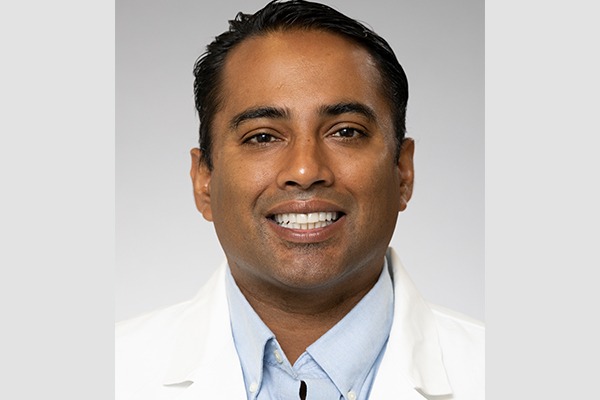Korak Sarkar graduated from the Hopkins BME undergraduate program in 2003. Since then, he has attended medical school at the University of California San Diego, and completed his training in neurology at the University of California Davis. Sarkar currently works as a neurologist at Ochsner Health and the New Orleans Veterans Affairs Medical Center.
In this Q&A, Sarkar shares memories from his time at Hopkins BME, recalls how his professors made an impact on his career, and gives advice to students looking to become biomedical engineers.
What made you choose Hopkins BME?
I actually added BME as a major later in my college career. I started as a neuroscience major on the pre-medical track. I had the opportunity to participate in a wet lab course as a freshman with BME Associate Professor Harry Goldberg. He guided one other classmate and me through interesting experiments including electrophysiological recordings from crawfish neurons. Dr. Goldberg saw my interest not only in the biology behind the neurosciences but also the engineering behind the oscilloscope doing the recording. He encouraged me to take a few BME courses and it was a natural fit for my interests and goals. I chose to attend JHU for the opportunity to study interesting, impactful STEM topics with intelligent and purposeful peers under the guidance of vested mentors. The JHU BME program embodies that unique combination.
Do you have any memories that stand out from your time as a student?
I remember being enthralled by Physiological Foundation Lab or “Phys Found” as we called it. The lab interwove the fundamentals of neuroscience, applied mathematics, and engineering into an interactive in-vivo environment. It also cultivated a team approach to scientific and engineering problem solving that I find valuable to this day. It was definitely challenging, but well worth the late nights and difficult problem sets.
Tell us about a few BME faculty members who really had an impact on your time here.
Professor Harry Goldberg’s passion for science, rigor, and education has resonated with me to this day. He remained one of my mentors during my college career and throughout my medical training. I recently reconnected with my classmate from Professor Goldberg’s lab and specifically discussed the vivid and impactful memories his class created that have remained with us over 20 years later.
I also had formative research experience in one of BME Professor Nitish Thakor’s seminars. He encouraged me to pursue my interest in emerging healthcare technologies and complete a final paper on nascent preliminary data on the novel application of electroceuticals to a canine model of obstructive sleep apnea. Fast forward 20 years and now there is an FDA-approved device based on this concept that I can recommend to my patients. The density of talented, engaged, and supportive mentors within JHU BME has had a significant long-term positive impact on my professional trajectory.
Where are you working now? How did you get involved in this line of work?
My main roles at Ochsner Health and the New Orleans Veterans Affairs Medical Center revolve around three main components:
- A clinical role as a practicing neurologist with a focus on brain injury in civilians and veterans. In conjunction with a multidisciplinary team of social workers, physical, occupational, and speech therapists, we optimize the function and facilitate the community re-integration of individuals who have suffered a neurological insult.
- An administrative role as an associate chief medical information officer with a focus on the informatics of a) clinical imaging and b) neuroscience
- An innovation role as the clinical director of Ochsner’s medical 3D (m3D) Lab. The lab serves as a vehicle for my interests in medical extended reality (mXR), medical 3D printing, health policy, and bio-innovation.
The neurosciences and medicine always fascinated me and clinical medicine was an obvious path. My interest in bio-innovation, digital medicine, and policy has been cultivated by a variety of experiences and organizations, particularly my current institutions, the American Academy of Neurology, Northwestern University, and most recently my matriculation in Cedars-Sinai Master’s in Health Delivery Science. Continuous learning has been imperative to my professional growth.
What advice do you have for aspiring biomedical engineers?
The current zeitgeist in medicine will require intelligent, technical, but not necessarily clinical talent to support the ongoing transformation of healthcare delivery. Biomedical engineers straight out of college have made significant contributions to the Ochsner m3D Lab, particularly during the pandemic. I would advocate biomedical engineers engage directly with clinicians and clinical delivery organizations to identify novel, fulfilling, and impactful roles in healthcare.

